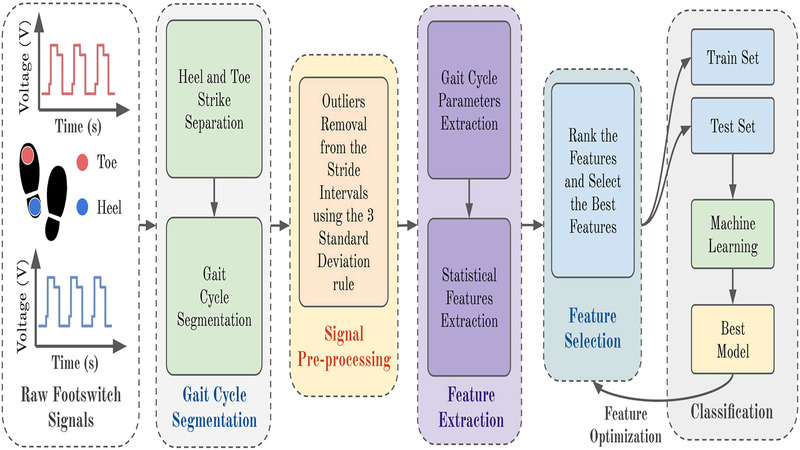
New publication in 2022: Computer in Biology and Medicine (IF: 4.589)
Abstract
Tai Chi has been proven effective in preventing falls in older adults, improving the joint function of knee osteoarthritis patients, and improving the balance of stroke survivors. However, the effect of Tai Chi on human gait dynamics is still less understood. Studies conducted in this domain only relied on statistical and clinical measurements on the time-series gait data. In recent years machine learning has proven its ability in recognizing complex patterns from time-series data. In this research work, we have evaluated the performance of several machine learning algorithms in classifying the walking gait of Tai Chi masters (people expert on Tai Chi) from the normal subjects. The study is designed in a longitudinal manner where the Tai Chi naive subjects received 6 months of Tai Chi training and the data was recorded during the initial and follow-up sessions. A total of 57 subjects participated in the experiment among which 27 were Tai Chi masters. We have introduced a gender, BMI-based scaling of the features to mitigate their effects from the gait parameters. A hybrid feature ranking technique has also been proposed for selecting the best features for classification. The research reports 88.17% accuracy and 93.10% ROC AUC values from subject-wise 5-fold cross-validation for the Tai Chi masters' vs normal subjects’ walking gait classification for the “Single-task” walking scenarios. We have also got fairly good accuracy for the “Dual-task” walking scenarios (82.62% accuracy and 84.11% ROC AUC values). The results indicate that Tai Chi clearly has an effect on the walking gait dynamics. The findings and methodology of this study could provide preliminary guidance for applying machine learning-based approaches to similar gait kinematics analyses.
https://doi.org/10.1016/j.compbiomed.2021.105184